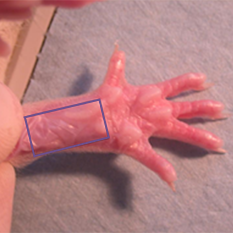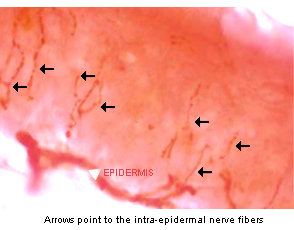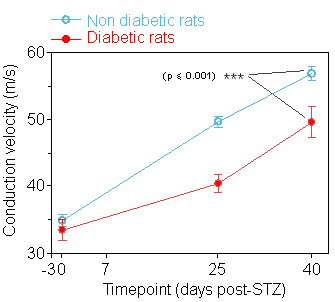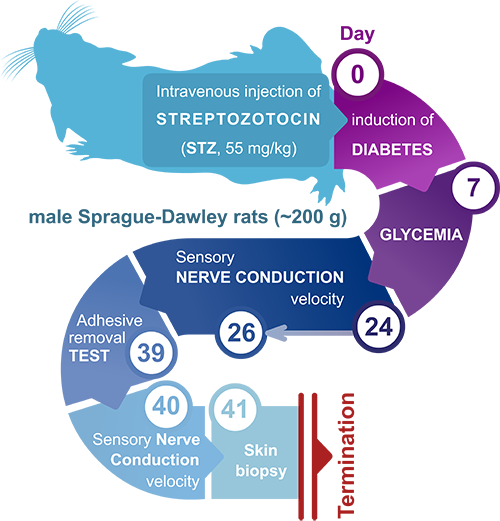PERIPHERAL NEUROPATHIES
-
Peripheral neuropathy is the result of damages of the peripheral nervous system. These troubles can be caused either by a trauma or diseases as for example diabetes.
NEUROFIT proposes animal and cellular models able to evaluate the neuroprotective activity of your compounds.
STREPTOZOTOCIN (STZ)
Diabetic neuropathy can be studied in rat following streptozotocin administration which induces a rapid and persistent hyperglycaemia.
As in diabetic patients, the peripheral neuropathy in this model is characterized by reduced nerve conduction and loss of sensation as a result of skin denervation.
This model is used to assess the neuroprotective potential of test compounds against diabetic neuropathy.
-
Compound testing
Neuroprotectant are usually tested in this model but other treatments could also be considered. Please feel free to contact us to discuss the feasibility of your study.
-
Endpoints
☐ Loss of intra-epidermal nerve fibers (skin denervation)
☐ Nerve conduction velocity
-
Induction DIABETIC NEUROPATHY in the rat
-
Skin denervation in diabetic rats
-
Skin biospy and Histology in the rat

☐ At least 1cm² diameter area of skin is taken from the hindpaw of the animal
☐ 50 µm-thick cryosections are cut vertical to the skin surface and then mounted on eukitt
☐ Staining of IENF by PGP9.5 antibody and count of IENF per microscope field (total of ~20 microscope fields)-
Transverse section of skin

-
Nerve conduction deficit in diabetic rats
Loss of intra-epidermal nerve fibers

After a first painful phase, severe loss of intra-epidermal nerve fibers (IENF) in the skin hindpaw and reduction of nerve conduction velocity similar to that observed in human are observed.
You could also be interested in
-
IENF
The degeneration of intra-epidermal nerve fibers can be monitored and quantified in various animal models of peripheral neuropathy.
Paw pressure
The paw pressure test consists in applying a uniformly increasing mechanical pressure on the animal paw.
-
SNCV
Sensory nerve conduction velocity is used in the diagnosis of nerve damage or nerve dysfunction.


